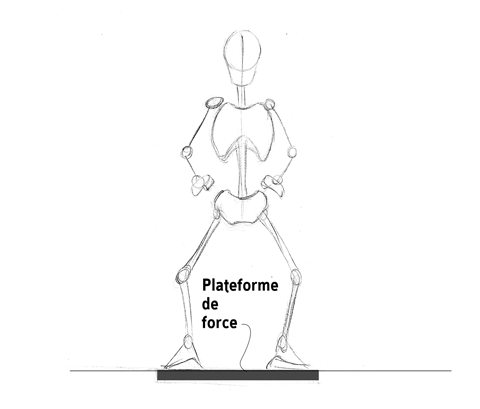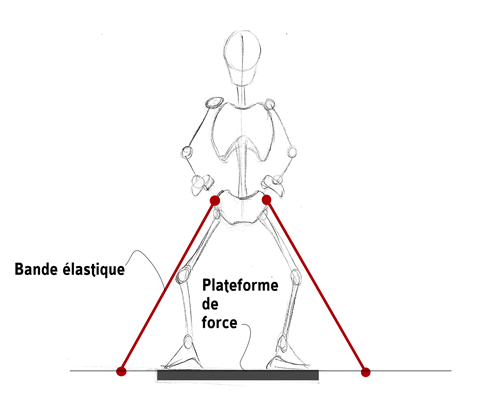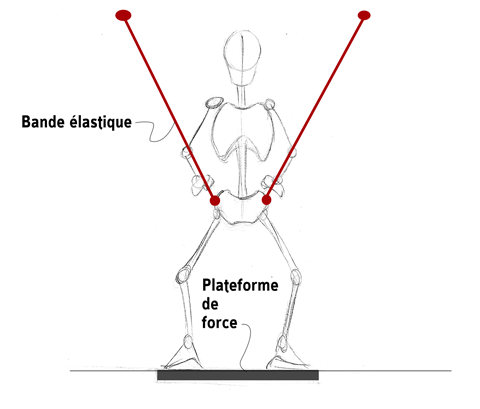
Muscular power output is an important parameter of performance in many sports and rugby is no exception. For an isolated muscle, the power produced is the product of the external force developed by this muscle and its speed of contraction. In a polyarticular motion (i.e., a motion involving multiple joints), the total external power is the product of the total external force developed and the speed of movement. This theme will be the subject of a review which will be published very soon on the website.
Due to its definition, muscular power depends on both variables and its manipulation can have a positive effect on the improvement of its performance. For athletes with a high level of strength, a work focused on the speed of execution of the movement will be necessary to improve the power produced, and vice versa. The vertical jump without additional charge is an exercise that often allows maximum power output due to the high speed of execution of the movement and the optimal load (i.e., the body mass).
Based on these informations, a team of Australian researchers investigated the value of using elastic bands (you can check our online store for high-end resistance bands) in vertical jumps in high-level rugby players. For this, they proceeded in two steps: the first step was to understand the kinetic differences between 3 different vertical jumps in trained subjects ; The second step was to test over a period of 4 weeks the effect of one of these 3 types of jumps including a training with alternate of heavy and light loads on the vertical performance in jumps in high-level rugby players.
For this part of the study, 8 subjects who had taken part in resistance training for at least 6 months made 3 different jumps : countermovement jump (CMJ) (Fig. 1), resisted CMJ with elastic band (Fig. 2) and assisted CMJ with elastic band (Fig. 3). The swinging of the arms during these 3 jumps was allowed (see Abalkov Jump). The assistance / resistance provided by the elastic bands was about 20% of the body mass of the subjects when they were standing, legs fully extended. The subjects made these jumps in random order. Using a force platform, the researchers measured maximal velocity and force, and determined the rate of force development and maximal power relative to the body mass.

Figure 1. CMJ

Figure 2. CMJ with elastic resistance

Figure 3. CMJ with elastic assistance
For this second part of the study, 28 New Zealand professional rugby players participated in a training protocol that lasted 4 weeks. Subjects were divided into 3 groups, one group per type of vertical jump. The maximal vertical jump height was evaluated before and after the 4-week protocol using a linear position transducer (Gymaware®, Kinetic Performance Technology, Australia). The protocol consisted of 2 weekly sessions of a program with alternating heavy / light loads spread over 2 exercises:
It should be noted that these 4 weeks of protocol were included in the players competitive season. Each week, these rugby players participated in 2 strength and power training sessions, 1 speed development session, 4 specific team training sessions, 1 match and a recovery session.
The results of this first part show that the CMJ with elastic assistance allowed to develop the most important speed of execution. This is no surprise, since during the countermovement, the elastics band are stretched and accumulate elastic potential energy that will participate in the propulsive phase of the jump. This high speed allowed subjects to produce greater power relative to body mass compared to the other two jumps. The CMJ with elastic assistance is also associated with the less impact forces at the landing of the jump.
The force, the rate of force development and the impact force at landing are maximal during the CMJ with elastic resistance. In addition, the tension produced by the elastic resistance caused a faster countermovement. This could result in an improvement of the stretch-shortening cycle, and thus an improvement of the propulsive phase of the jump.
The results of this second part show an increase in the maximal jump height for the three groups, with a more pronounced increase for the groups that made the jumps with elastic resistance and assistance (It is necessary to remember that this protocol was inserted into the daily training and competition of rugby players) :
According to the authors, the improvement of the jump height in the "assistance" group could be due to a decrease in the coactivation of the antagonist muscles and / or an increase in the muscle fibers type II activation and / or neuromuscular adaptations. Regarding the gain for the "resistance" group, this could be explained by an increased eccentric phase before the jump and after the flight phase, during the impact. Indeed, different studies have shown a significant gain in maximal jump height after a jump training with accentuation of the eccentric phase. The eccentric phase could improve the storage of elastic potential energy.
At high level, it is harder to improve performance. This protocol of 2 training sessions per week during the competitive period of a professional rugby team allowed an increase in the maximum jump height, even if it seems trivial. The protocol was quite simple and time-saving and can be used for any type of athlete seeking jump height and / or lower extremity muscular power gains. The alternation of jump with elastic assistance / resistance can make it possible to work different aspects of the power profile : the force of contraction, the speed of execution, the rate of force development, the efficiency of the stretch-shortening cycle, etc. In addition, the jump with elastic assistance makes it possible to reduce the landing impact forces. This can allow the intensity to be graded during plyometric exercises such as after an injury return, for example, or to reduce the impact forces for athletes with a high body mass. Finally, coaches and physical trainers must consider the force-velocity profile of each athlete because some athletes will benefit more from a speed work than others (read our article on the topic).
We remind you that you can quote articles by limiting your quotation to 200 words maximum and you must include a nominative link to this one. Any other use, especially copying in full on forum, website or any other content, is strictly prohibited. In doubt, contact us.
Copyright © 2011-2024 - www.sci-sport.com - All rights reserved